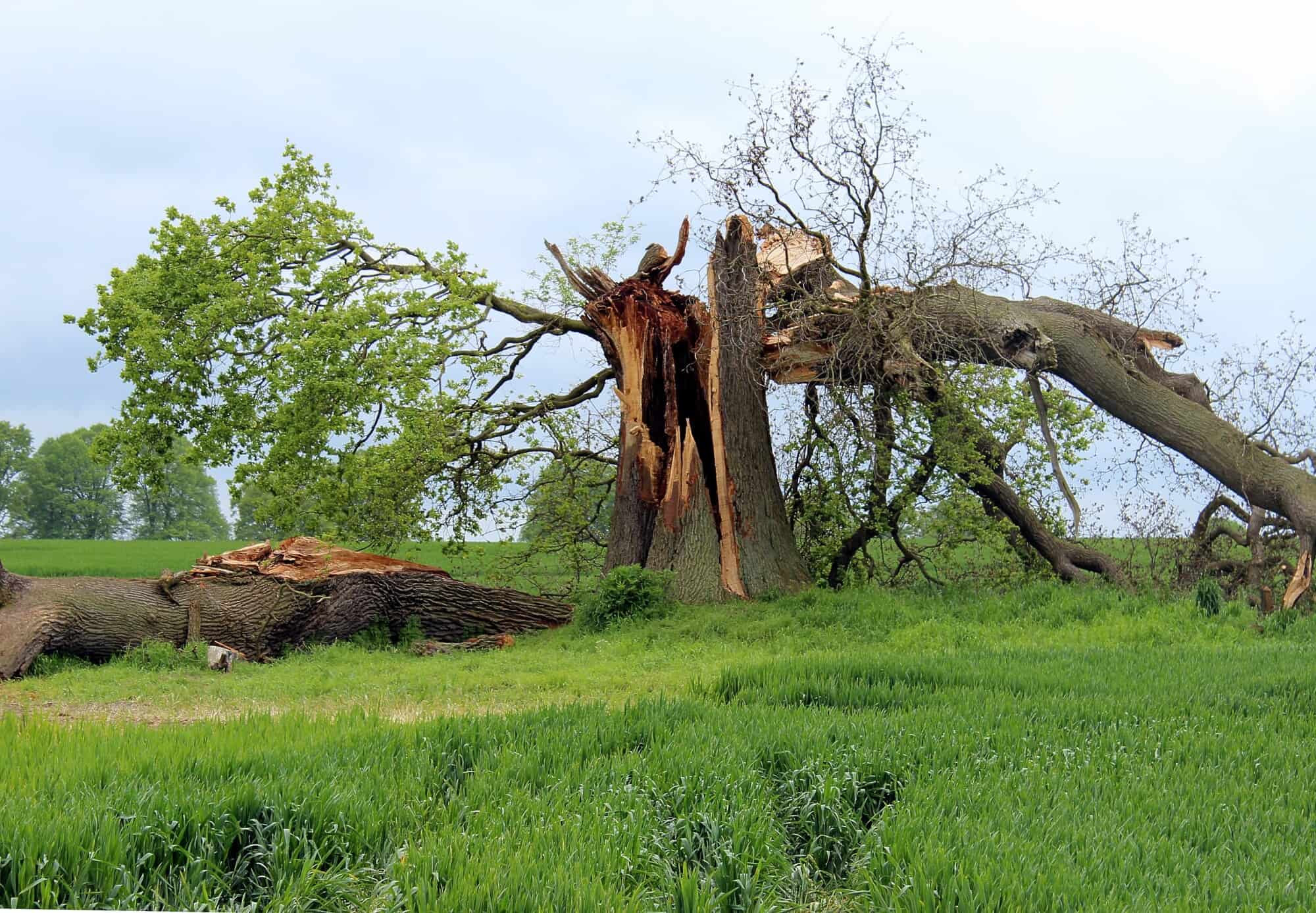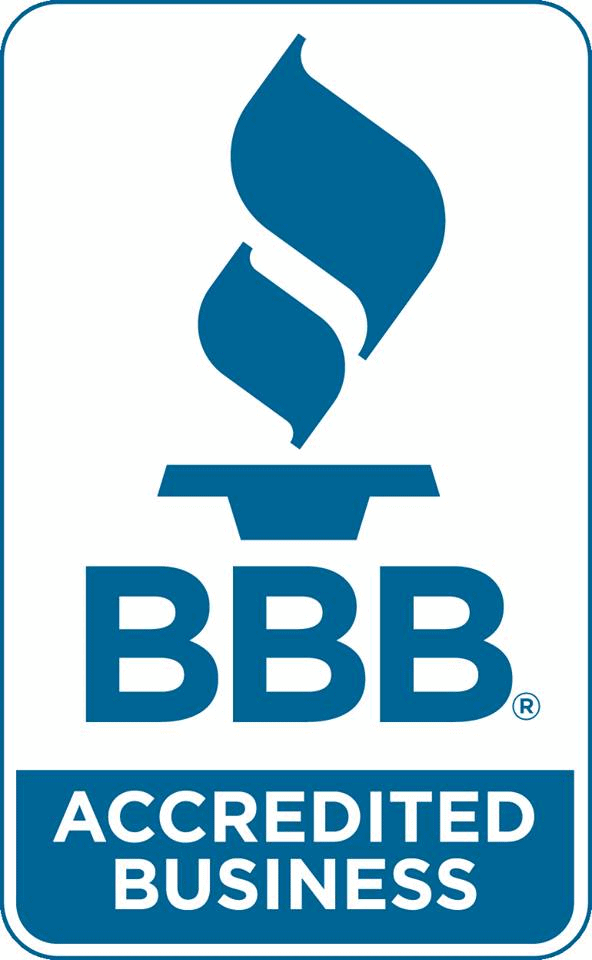Can a Storm Damaged Tree Be Saved?

Can a Storm Damaged Tree be Saved?
A storm may damage trees and leave them appearing as if there’s no tomorrow. It can break or damage major limbs. Also, it can shred or strip foliage, or the bark can be gouged or torn.
But, what appears to be lethal wounds are not always fatal to a tree. Trees have an incredible capacity to recover after tree storm damage.
Take your time and effort to save a tree only if a significant part of the tree is intact. Also, do it if the tree will still be beautiful and valuable to your property after making the repairs.
Here is what you need to do after the tree storm damage.
1. Treat Trees After a Storm Damage
Suppose the choice to fix the tree has been taken; the next issue is, “Can I be able to do tree storm damage repair myself, or do I seek expert assistance?”
It may be better to get the work done by a qualified expert. You should do this unless you have experience in using such equipment and can work off the ground. After establishing that you may save a tree, you should follow specific steps.
Examine the damage. Sometimes you may damage branches dangling from the tree. At the same time, others may look partially attached.
In some situations, there may be a separation of whole forks. Plan which branches you will eliminate and where to cut.
Cut any damaged branches from the nearest lateral branch, main stem, or bud. You should do this rather than from the middle of a branch.
2. Removal of Branches
You can prune branches with diameters less than 3″ with pruning shears or a pole pruner. A sharp correctly positioned shear or pruner will make a clean cut. Also, it will not smash or tear bark tissue and will cut cleanup time by half.
You should remove larger branches with a sharp saw. When using a power saw, you will also require a safety line and harness.
The 3-cut technique is the most effective and least harmful way to remove big branches. This is because they don’t cause more damage to the tree. The undercut is the initial cut.
Saw roughly 12 to 18″ off the main stem or branch to which the damaged limb is connected from the bottom.
Cut approximately 1 to 1½” into the branch and remove the saw blade before it binds.
Saw roughly 2 to 3″ past the undercut for the second cut or over cut. Then, proceed until the branch is gone.
In eliminating the residual stub, you should do the final or flush cut. Saw in the natural depression formed by the trunk or branches.
Careless pruning storm-damaged trees might result in the loss of the entire branch or excessive sprouting. Also, it can lead to later development of further issues. This is because these sprouts are typically short-lived and poorly connected.
3. Torn Bark
In certain situations, bark tearing happens on big branches or the main stem. This is most frequent when lightning strikes trees.
Trim every loose bark back to the region where it is firmly connected. Don’t cut too deep into the tree’s wood. This type of bark cutting is called bark tracing.
You should slice all bark incisions into an oval form if feasible. This is to keep the trace as small as possible. In big areas, this may be challenging. Besides, pruning the bark in this manner promotes fast healing with little wood decay.
4. Split Forks
You can repair the main branches or some partially damaged forks without removing one or both branches. Unless you have prior experience, this task is beyond the ability of most homeowners.
If the break is almost equal, you can draw the split sections back together. Then, secure them using a wide diameter steel bolt and threaded screw rod inserted across the split area.
The appropriate repair technique starts with pulling the split together. You can do this using a tiny tackle and block or winch.
To get the most leverage, put them six to eight feet or more on top of the split. Drill holes in both halves of the split where you have placed the rod or bolt.
Long split regions may need the use of two or more bolts. Apart from the bolts, it’s typically beneficial to put a steel cable a few feet above the split between the two major branches of the split fork.
Fasten the cable to every branch with lag screws. If you wrap the cable around the branch, it will ultimately girdle it. This cable system serves to keep the crotch together. Thus, it decreases the possibility of future damage.
5. Treatment of Wounds
After pruning storm-damaged trees, you should treat all wounds larger than 1½ to 2″ in diameter with pruning paint or wound dressing. Dressings and paints don’t likely speed up healing. But they may stop drying out and have an aesthetic impact.
There are several commercial products available. Besides, you may use a few applications of orange shellac. You can also treat areas of damaged bark where tracing was made using this method.
6. Uprooted Trees
The severe storms may uproot trees. You can’t save a tree if it’s too huge. In this case, cutting storm-damaged trees is necessary.
You can straighten some smaller trees and brace them using guy cables or wires. To pull the tree upright, you’ll require some sort of power lift or equipment.
You should not use this method unless 1/3 to 1/2 of the roots are still in the soil. Then, the other visible roots are generally compact and undamaged.
Remove some dirt from under the root mass before pulling the tree upright.
This will help in positioning the roots below the current soil grade level. Fill up any gaps in the soil once you restore the tree to its upright position.
Water the trees to assist the soil in tightening up and eliminate air pockets.
Tie two or three guy lines to the trunk at a position roughly 2/3 the tree’s height. Also, do this to anchors located 12 to 15 feet from the base of the tree. This is to keep the tree in place, as is commonly done with freshly transplanted trees.
Contact a Reputable Tree Services After Tree Storm Damage
You know what? A major storm does not have to spell the end of your large trees.
If the storm has already hit, a reputable tree service can assist you in saving salvageable trees and removing damaged ones.
At AAATree Experts, we offer expert tree service for tree storm damage care to homeowners in Charlotte and the surrounding regions. This includes storm damage tree removal, landscaping, and trimming. We’re dedicated to conserve and enhance the beauty of your yard.
Call us today and our teams will respond immediately.



You must be logged in to post a comment.